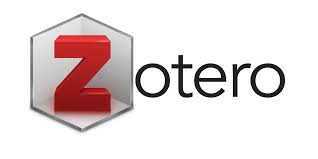Proses Berpikir Aljabar Berdasarkan Level Kognitif Mahasiswa
DOI:
https://doi.org/10.29240/ja.v5i2.8392Keywords:
Algebraic thinking process, Cognitive level, StudentsAbstract
Algebraic thinking skills need to be developed through learning mathematics, this is necessary to improve understanding of algebraic concepts. The ability to generalize experiences about numbers and calculations is a component of algebraic thinking abilities. It is important to know the student's algebraic thinking process. By knowing the student's thinking process, you can find out where the student's difficulties are and the causes of these difficulties. This research aims to analyze students' algebraic thinking processes based on students' cognitive levels. This research is qualitative research with an exploratory method. The subjects of this research were 21 Semester II Mathematics Education students at STKIP Kusuma Negara Jakarta. The data collection technique begins with giving algebraic thinking questions. The data analysis techniques used are data reduction, data presentation, and drawing conclusions. The research results showed that students in the high and medium categories met the indicators for all algebraic thinking, while students in the low category did not meet the algebraic thinking indicators. At the cognitive level, S1 subject meet all cognitive levels, S2 subject do not meet the cognitive level of knowledge utilization, and S3 subject only meet the cognitive analysis knowledge level.
Downloads
References
Agoestanto, A., Sukestiyarno, Y. L., Isnarto, Rochmad, & Lestari, M. D. (2019). The position and causes of students errors in algebraic thinking based on cognitive style. International Journal of Instruction, 12(1), 1431–1444. https://doi.org/10.29333/iji.2019.12191a.
Arifin, Z. (2012). Metodologi Penelitian Pendidikan (Filosofi, Teori, dan Aplikasinya). Surabaya: Lentera Cendika. Retrieved from http://ruangbaca-pasca.unesa.ac.id/index.php?p=show_detail&id=189
Brizuela, B. M., Blanton, M., Sawrey, K., Newman-Owens, A., & Murphy Gardiner, A. (2015). Children’s use of variables and variable notation to represent their algebraic ideas. Mathematical Thinking and Learning, 17(1), 34-63. https://doi.org/10.1080/10986065.2015.981939 .
Destrianti, S., Septiana, A., & Harmi, H. (2022). Kemampuan Peserta Didik dalam Menyelesaikan Soal Berbasis Higher Order Thinking Skills (HOTS). Arithmetic: Academic Journal of Math, 4(1), 33-42. http://dx.doi.org/10.29240/ja.v4i1.4160
Faizah, H. (2019). Pemahaman Mahasiswa Tentang Konsep Grup pada Mata Kuliah Struktur Aljabar. MUST:Journal of Mathematics Education, Science and Technology, 4(1): 23-34. http://dx.doi.org/10.30651/must.v4i1.2267.
Ferryansyah, Widyawati, E., & Rahayu, S. W. (2018). The analysis of students’ difficulty in learning linear algebra. Journal of Physics: Conference Series, 1028(1).
https://doi.org/10.1088/1742-6596/1028/1/012152
Dekker, T., & Dolk, M. (2011). From arithmetic to algebra. In Secondary algebra education (pp. 69-87). Retrieved from https://brill.com/display/book/edcoll/9789460913341/BP000005.xml
Hendroanto, A., van Galen, F., van Eerde, D., Prahmana, R.C.I., Setyawan, F., & Istiandaru, A. (2018). Photography activities for developing students’ spatial orientation and spatial visualization. Journal of Physics: Conference Series, 943(1), 012029. https://doi.org/10.1088/1742- 6596/943/1/012029.
Ibrahim, N. N., Ayub, A. F. M., & Yunus, A. S. M. (2020). Impact of Higher Order Thinking Skills (HOTS) Module Based on the Cognitive Apprenticeship Model (CAM) on Student's Performance. International Journal of Learning, Teaching and Educational Research, 19(7), 246-262. https://doi.org/10.26803/ijlter.19.7.14
Isroil, A., Budayasa, I. K., dan Masriyah. 2017. “Profil Berpikir Mahasiswa SMP dalam Menyelesaikan Masalah Matematika Ditinjau dari Kemampuan Matematikaâ€.Jurnal Review Pembelajaran Matematika. Vol. 2, No. 2, Hal. 93-105. https://doi.org/10.15642/jrpm.2017.2.2.93-105.
Kieran, C. (2004). Algebraic thinking in the early grades: What is it? The Mathematics Educator, 8(1), 139-151. Retrieved from https://www.researchgate.net/profile/Carolyn-Kieran-2/publication/228526202_Algebraic_thinking_in_the_early_grades_What_is_it/links/55895b8408ae2affe714d428/Algebraic-thinking-in-the-early-grades-What-is-it.pdf
Kızıltoprak, A., & Yavuzsoy Köse, N. (2017). Relational thinking: The bridge between arithmetic and algebra. International Electronic Journal of Elementary Education, 10(1), 131–145. Retrieved from https://www.iejee.com/index.php/IEJEE/article/view/305.
Kuswana, W. S. (2012). Taksonomi Kognitif Perkembangan Ragam Berpikir. Bandung: PT Remaja Rosdakarya Offset. Retrieved from https://pustaka.unm.ac.id/opac/detail-opac?id=37096
Maulidiah, N. (2016). Profil Berpikir Aljabar Siswa SMP dalam Pemecahan Masalah Matematika Ditinjau dari Kemampuan Matematika. MATHEdunesa Jurnal Imiah Pendidikan Matematika, 3(5), 414-418. Retrieved from https://garuda.kemdikbud.go.id/documents/detail/1577982
Marzano, R. J., & Kendall, J. S. (2007). Praise for the Second Edition of The New Taxonomy of Educational Objectives. Corwin Press, i–ii. Retrieved from https://books.google.com/books?hl=id&lr=&id=JT4KAgAAQBAJ&oi=fnd&pg=PP1&dq=Marzano,+R.+J.,+%26+Kendall,+J.+S.+(2007).+Praise+for+the+Second+Edition+of+The+New+Taxonomy+of+Educational+Objectives.+Corwin+Press,+i%E2%80%93ii.&ots=xmfXOxhB8y&sig=fAFScTFiljy4R6LiOtnLfllOrrE
Müller, T. J., Cury, H. N., & A, J. V. (2014). A Discussion about Errors in Algebra for Creation of Learning Object. International Journal of Contemporary Educational Research, 1(1), 42-50–50. Retrieved from https://dergipark.org.tr/en/download/article-file/147937
Mustaffa, N., Ismail, Z., Tasir, Z., & Said, M. N. H. B. M. (2015). A review on the developing algebraic thinking. Advanced Science Letters, 21(10), 3381–3383. https://doi.org/10.1166/asl.2015.6511
Mustafa, G., & Derya, C. (2016). A research on future mathematics teachers instructional explanations: The sample of Algebra. Educational Research and Reviews, 11(16), 1500–1508. https://doi.org/10.5897/err2016.2823
Nissa, I. C. (2021). Eksplorasi Kemampuan Siswa Memecahkan Masalah Program Linier Grafik dan Soal Cerita. Arithmetic: Academic Journal of Math, 3(1), 27-46. http://dx.doi.org/10.29240/ja.v3i1.2707
Pratiwi, V., Herman, T., & Lidinillah, D. A. M. (2018). Upper Elementary Grades Students’ Algebraic Thinking Ability in Indonesia. IJAEDU- International E-Journal of Advances in Education, III(9), 705–715. https://doi.org/10.18768/ijaedu.390554
Quinlan, C. (2001). From geometric patterns to symbolic algebra is too hard for many. Numeracy and Beyond, 426-433.
Siregar, N. N., & Firmansyah, F. (2021). Analisis Kemampuan Pemecahan Masalah Matematikan Berdasarkan Teori Polya pada Mahasiswa SD Kelas VI Kabupaten Manokwari. Jurnal Elementaria Edukasia, 4(1), 116–122. https://doi.org/10.31949/jee.v4i1.3040 .
Sugiyono. (2015). Metode Penelitian Kombinasi (Mix Methods). Bandung: Alfabeta.
Sugiyono. (2019). Metode Penelitian Kuantitatif Kualitatif dan R&D. Bandung: Alfabeta.
Suominen, A.L. (2018). Abstract Algebra and Secondary School Mathematics Connections as Discussed by Mathematicians and Mathematics Educators dalam Wasserman, N.H. (Ed.), Connecting Abstract Algebra to Secondary Mathematics, for Secondary Mathematics Teachers. New York, NY, USA: Springer. Retrieved from https://link.springer.com/chapter/10.1007/978-3-319-99214-3_8
Usiskin, Z. 2012. What does it Mean to Understand some Mathematics?. 12th International Congres on Mathematical Education. Seoul: Korea. Retrieved from https://link.springer.com/chapter/10.1007/978-3-319-17187-6_46
Walkoe, J. (2015). Exploring teacher noticing of student algebraic thinking in a video club. Journal of Mathematics Teacher Education, 18(6), 523-550. https://doi.org/10.1007/s10857-014-9289-0
Zuya, E. H., & Kwalat, S. K. (2015). Teacher’ s Knowledge of Students about Geometry. International Journal of Learning, Teaching and Educational Research, 13(3). Retrieved from http://hdl.handle.net/123456789/2034
Downloads
Published
Issue
Section
Citation Check
License
Authors who publish with ARITHMETIC: Academic Journal of Math agree to the following terms:
- Authors retain copyright and grant the journal right of first publication with the work simultaneously licensed under a Creative Commons Attribution-NonCommercial-ShareAlike 4.0 International License (CC BY-NC-SA 4.0) that allows others to share the work with an acknowledgment of the work's authorship and initial publication in this journal.
- Authors are able to enter into separate, additional contractual arrangements for the non-exclusive distribution of the journal's published version of the work (e.g., post it to an institutional repository or publish it in a book), with an acknowledgment of its initial publication in this journal.
- Authors are permitted and encouraged to post their work online (e.g., in institutional repositories or on their website) prior to and during the submission process, as it can lead to productive exchanges, as well as earlier and greater citation of published work (See The Effect of Open Access).







